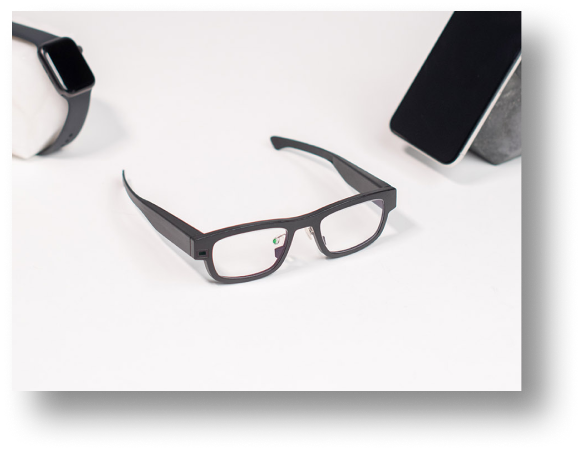
MindLink Air unveils all-day eye tracking glasses
EP&T Magazine
Electronics Engineering Medical Wearable Technology AdHawk glasses microsystems MindLink Sensor Technology wearablesCamera-free solution aims to improve cognitive wellness and productivity
AdHawk Microsystems, a Waterloo-based developer of eye tracking technology, has unveiled its first ever research-grade eye tracking glasses for the consumer market. AdHawk’s MindLink Air device unlocks the connection between the eyes and the brain, and can be worn in comfort and style as a pair of lightweight everyday glasses.
They feature embedded all-day eye tracking technology to provide valuable data about task proficiency, productivity, and cognitive health and wellness throughout the day. The glasses come in three styles (rectangular, round, oval) and many colors, and can be customized to the wearer’s needs by adding an existing prescription, blue light capabilities, or as sunglasses.
“We’re proud of our track record of bringing cutting edge eye tracking technology to the medical and research communities. Now we’re excited for consumers to experience the power of our technology and to take control of their cognitive wellness,” said Neil Sarkar, CEO of AdHawk Microsystems. “MindLink Air will provide customers with personalized, longitudinal data they can use to adjust their daily routine to reduce eye strain, improve focus to get into a flow state, avoid mental fatigue, and understand when they are most productive. We think of it as the first fitness tracker for the brain.”
How does it work?
MindLink Air’s sensors observe eye behaviour and movement, including blink activity, pupil dilation, gaze behaviour, fixation depth when looking at different distances, and even saccades—the rapid and precise movements that our eyes make all the time. The precision and speed of these sensors is unmatched in wearable products.

Source: AdHawk Microsystems
With personalized, longitudinal data, MindLink Air can measure and monitor cognitive wellness and eye health throughout the day, indicate when a break is needed to avoid tired eyes or mental fatigue, and determine periods of peak cognitive performance. People can use these personalized insights to help adjust their daily routines to maximize efficiency while reducing eye strain, improving focus, and avoiding mental fatigue. In the near future, like with other biomarkers, long-term trends of neurological activity captured with eye tracking will reveal the tiniest changes in cognitive function over time to indicate brain health, disease progression, and treatment efficacy.
MindLink Air is easy to use with a simple mobile app that communicates wirelessly with the glasses. While the glasses are worn, the ultra-compact micro-electromechanical system (MEMS) begins tracking eye movement robustly, following a user’s gaze with incredible accuracy, and capturing data from the eye thousands of times each second. The MEMS-based sensor is tiny and energy efficient, allowing for all-day use in a lightweight pair of glasses.
Eye sensor is based on research-grade technology
MindLink Air’s eye sensor is based on research-grade technology used by hundreds of researchers around the world. It incorporates the MEMS scanner-based eye tracking system and methods invented by the AdHawk team. Researchers from the University of Waterloo and other laboratories and clinics around the world are using AdHawk’s MindLink technology to support their studies.
“We have been studying the MindLink technology in providing unobtrusive and objective information about a pilot’s cognitive load, stress, and mental state allowing for improvements in pilot training and assessments,” said Ewa Niechwiej-Szwedo, Ph.D., Associate Professor of Neuroscience and Human Health at the University of Waterloo. “The AdHawk technology has tremendous promise in its MindLink Air as its lightweight and untethered form factor allows for inconspicuous and useful monitoring of visuomotor behavior across a wide array of tasks and environmental contexts.”
